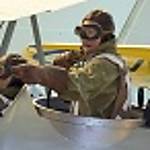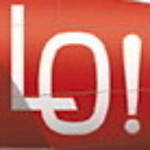Aircraft have always been my favourite subject for modelling, so it's no surprise that when I got back into the hobby last year, after a twenty-five year absence, that it would be an aircraft model I would select for my first build. My choice being the newly tooled Airfix 1:48 Me109e. An absolute joy to put together and a revelation compared to the Airfix kits of old. It was one of many surprises as I reacquainted myself with the hobby. Since then Iíve had a go at armour, military figures and fantasy, but aviation has always been the soft spot for me.
So when Jim did his Mail Call and asked if anyone was interested in doing some reviews, I knew this was something I wanted to have a crack at. Iíd already done some reviews on my blog and YouTube site, so that seemed manageable, but what subject would I write up? Now normally I wouldnít be one to put my hand up for a biplane, but there on the list of kits on the Kitmaker website for review was the RS Models Curtiss Hawk II in 1:72 scale.

Who are RS Models? I had no idea at the time, but I knew this beautiful interwar fighter was something I certainly wanted to build.
Iíve built many plane kits over the years, but tended to stay away from biplane kits, with their complicated wing arrangement and generally troublesome fit. At least that had been my experience in my last build of one, back inÖ. 1973!
Now cut to today and I have this lovely little kit of a Curtiss Hawk before me, thanks to Jim and Richard. Iíve already written up the inbox review, which you can find on the Aeroscale site in the reviews section and now its time to share with you all the glory and no doubt challenges as I reacquaint myself with a kit build of a biplane after quite an absence. I hope you enjoy it and I equally look forward to your suggestions and advice.
So lets get started.
The kit includes some photo etch and resin details.


I decided the best place to start with the kit was with cleaning up the resin parts. I also cut out some of the photo-etch parts I would need for assembling the engine.

This progressed very quickly and it wasn't long before all the parts were cleaned up. I used sprue cutters to remove most of the parts from the excess resin and a sharp hobby knife to cleanup around the radial engine. Finally a light sand and all the parts were good to go. While resin can be a nice addition to a kit, this is one part of this model that puzzles me a bit. I cant help thinking that all these resin parts could have been just as easily moulded in plastic and been just as good or certainly near enough in 1:72 scale to not matter.
You will also notice I only prepared one of the resin engine cowls, as I had already made my choice of subject, which will be the Chinese Airforce Hawk shown on the box art.
Next up is work on the engine.


























